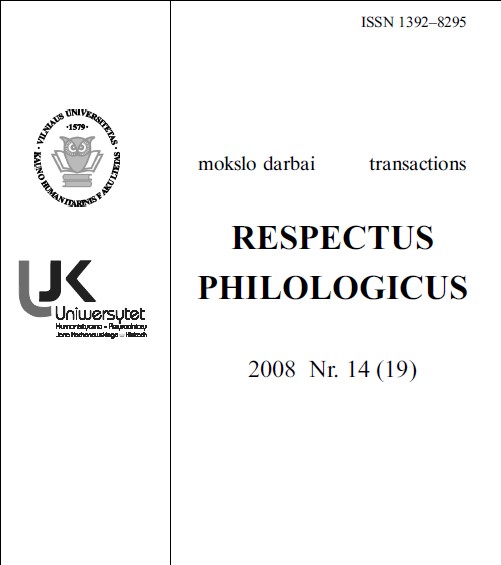К СОПОСТАВЛЕНИЮ ТЕМПОРАЛЬНЫХ ФРАГМЕНТОВ СЛОВЕНСКОЙ И РУССКОЙ ЯЗЫКОВЫХ КАРТИН МИРА: СУТОЧНОЕ ВРЕМЯ
ON COMPARING TEMPORAL FRAGMENTS OF THE RUSSIAN AND SLOVENIAN WORLDVIEW: THE PERIOD OF DAY AND NIGHT
Author(s): Jelena Mihailovna KonickajaSubject(s): Comparative Linguistics, Eastern Slavic Languages, South Slavic Languages
Published by: Vilniaus Universiteto Leidykla
Keywords: time category; day and night; conceptualization; linguistic worldview; the Slovenian language; the Russian language;
Summary/Abstract: The article compares the characteristics of temporal worldview in closely related languages – Russian and Slovenian. Linguists who focus on the problem of entity conceptualization in different cultures are first interested in the category of time. It was established that the Russian language and West European languages conceptualize time differently; for instance, in English and French, day is the same what is considered to be night in Russian. The article reveals the differences of time conceptualization by Russians and Slovenians and it leads to the conclusion that the Slovenian language is closer to West European languages. The examples provided in the article illustrate that the Russian time is more anthropocentric and is experienced as submitting to the rhythm of a person. The Slovenian time is oriented to the natural and astronomical cycle. A characteristic example of it is a temporal idiom which is based on two opposite images of the two languages – in Slovenian noè in dan (night and day), in Russian dan i noć (day and night). Space prepositions are extensively employed in both languages to detail the day and night time. Hence, Russian and Slovenian prepositional constructions reflect different criteria of distinguishing and comprehending time fragments. In the Russian worldview, the importance is attached to the result of the activity, which fully covers the day and night period.
Journal: Respectus Philologicus
- Issue Year: 2008
- Issue No: 14 (19)
- Page Range: 177-184
- Page Count: 8
- Language: Russian

